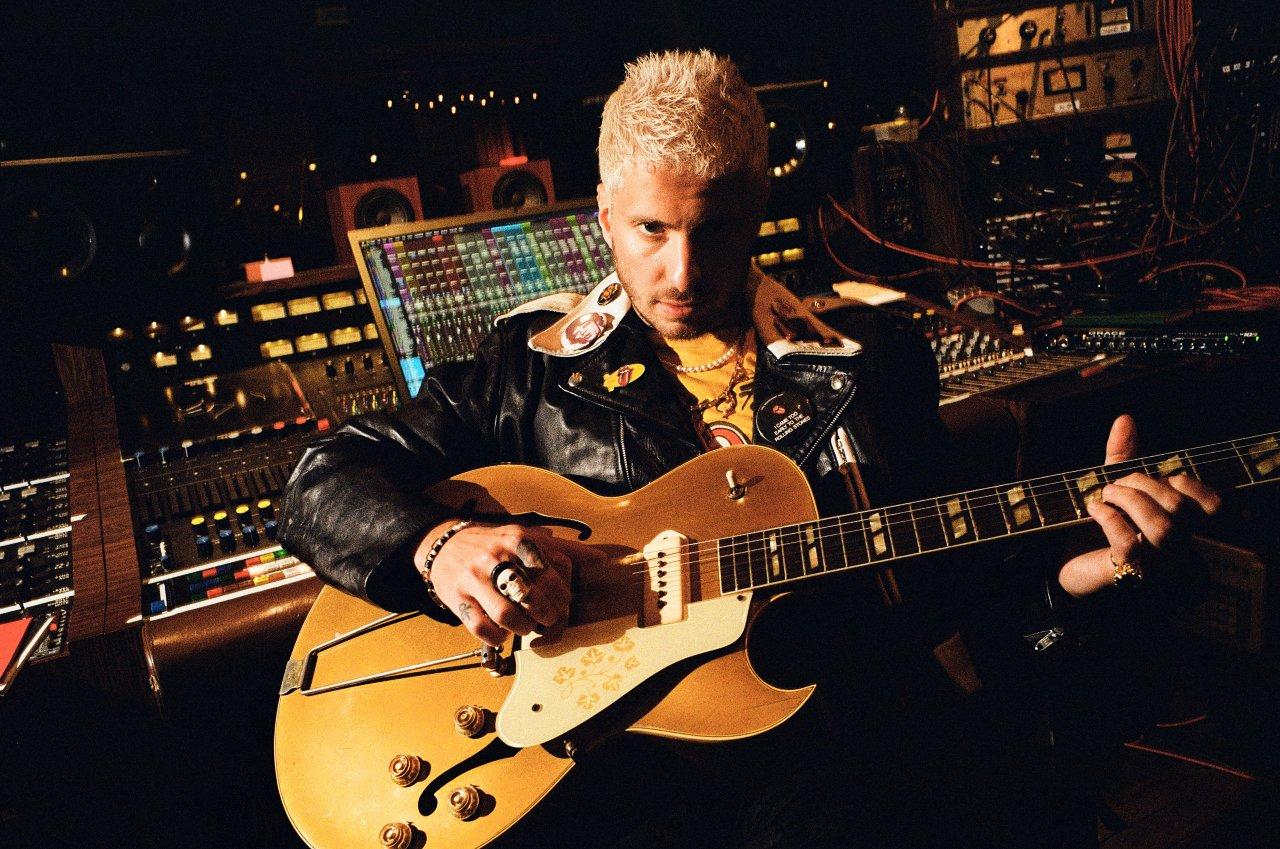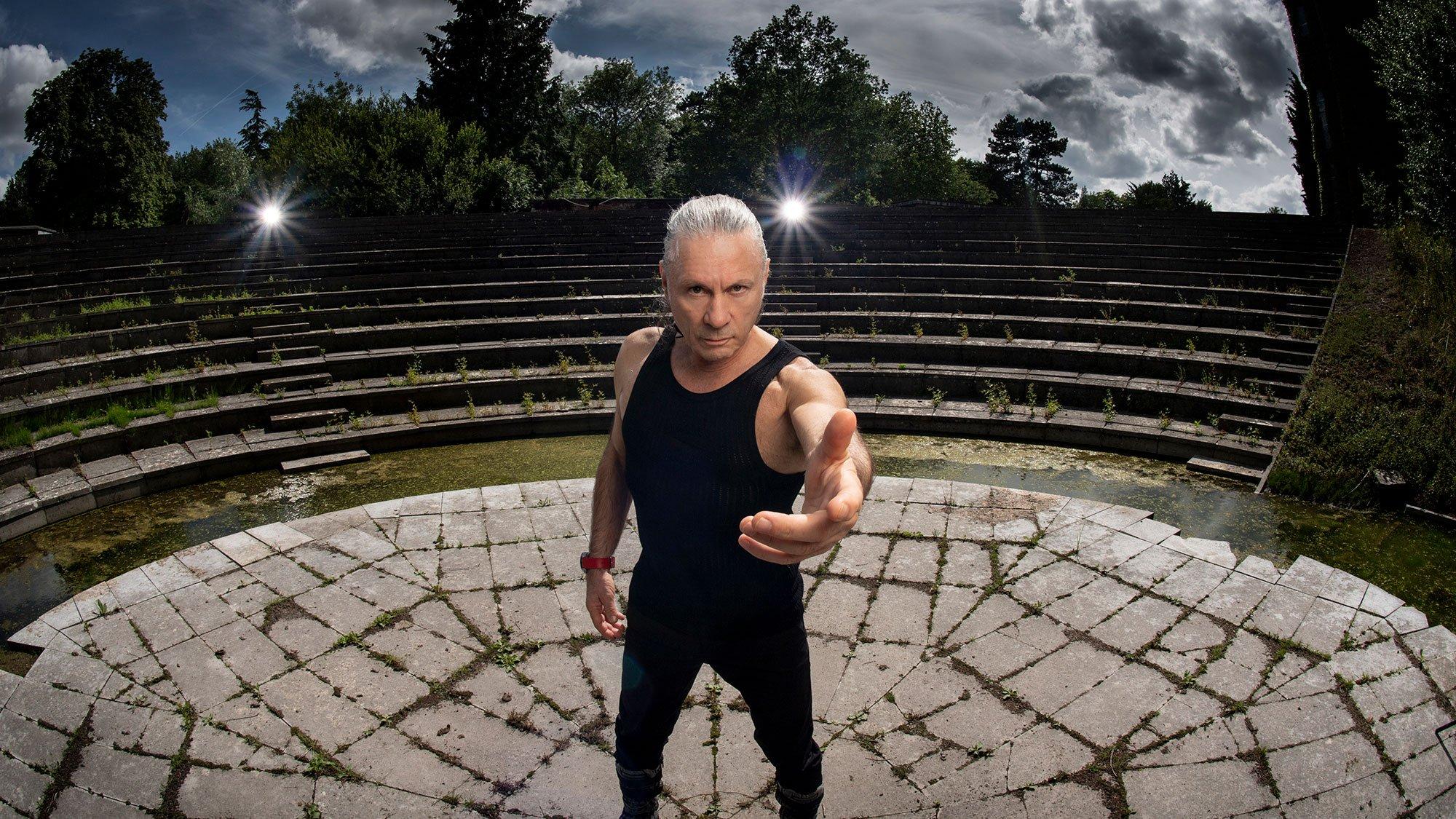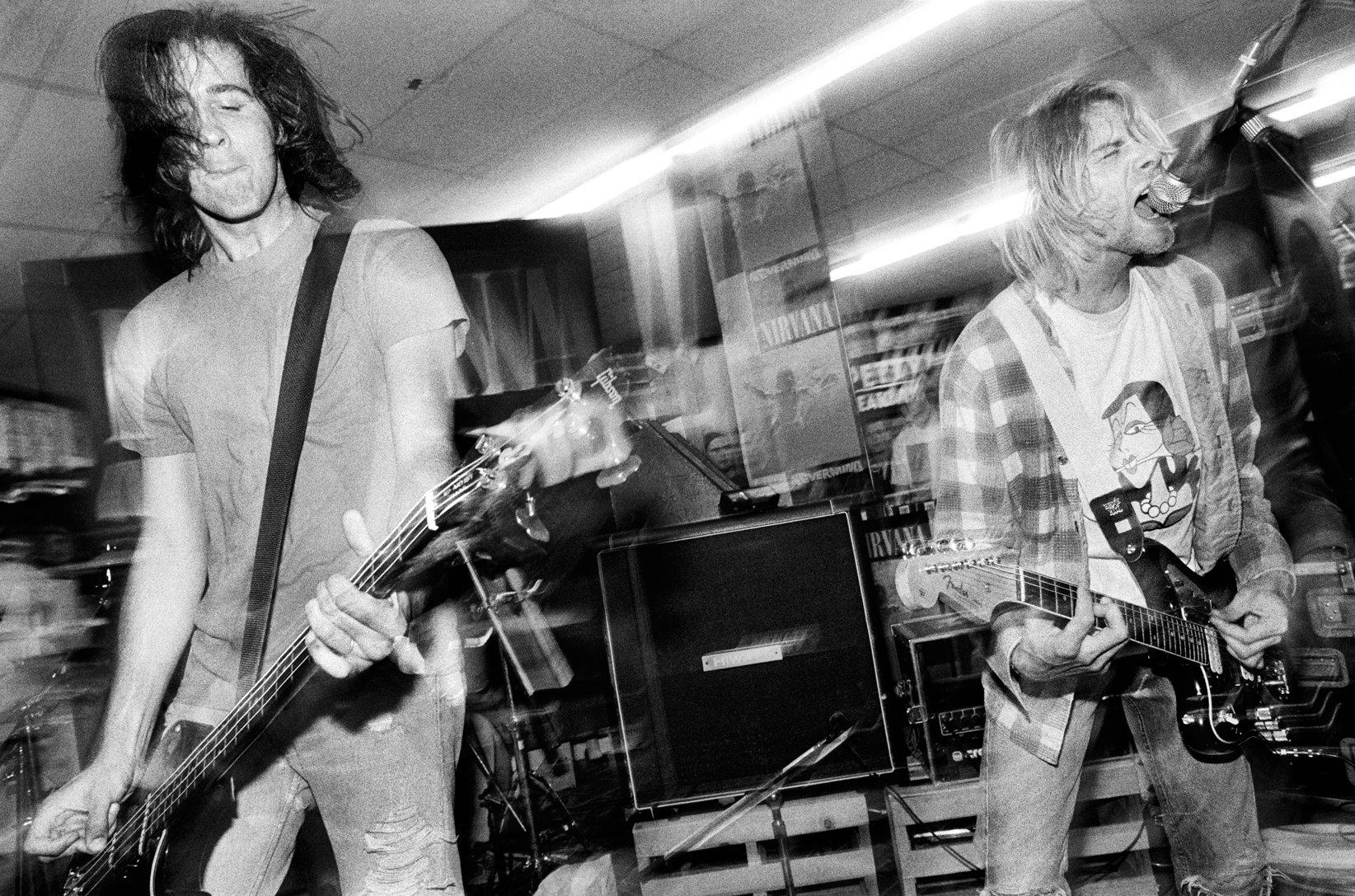When photographer Charles Peterson first saw Nirvana at a small Seattle club in 1988, he was so underwhelmed he didn’t bother taking a single picture of them.
The band shared a bill with local act Blood Circus, who, Peterson says, "put on quite a grungy show; lots of hair going everywhere and guitars flying." When Nirvana came on, "they had the lighting guy dim the light really low and Kurt [Cobain] just stood there and stared at his feet. The music came off as kind of heavy, really difficult to play. I just didn’t get it." At one point Peterson even turned to Sub Pop Records co-founder Jonathan Poneman and asked him, "Jon, are you sure about these guys?"
Sub Pop was sure about Nirvana, and would later sign them. And as the label’s in-house photographer, Peterson (who was in his mid-20s at the time) documented the band’s career for the next five years — from their indie days to international stardom. In his latest book, Charles Peterson’s Nirvana, from Minor Matters Books, Peterson has winnowed down his impressive catalog of an estimated 3,000 shots to a well-curated 90.
Released on Feb. 20, Cobain’s birthday, Charles Peterson’s Nirvana features shots from his first session with the band, lounging in the wilds of Bainbridge Island, Washington ("They did have that kind of hippie aspect to them") to his last, a promotional shoot for In Utero ("They all, Kurt especially, just seemed a little tired"). While the book tells the band's story, it's less of a history and more reflective of Peterson's own experience.
As Peterson recalls, Minor Matters Founder Michelle Dunn Marsh defined the book’s direction, believing Peterson's "artistic sensibility and how it moves the viewer and portrays the power of the music" set his work apart from the thousands of other images taken of Nirvana.
Peterson spoke with GRAMMY.com about the stories behind five images in the book. "And like I say in the introduction, go put on a Nirvana record before you look at this book, and you really get that idea of immersion in the music," the photographer advises.
All images © Charles Peterson/Minor Matters Books
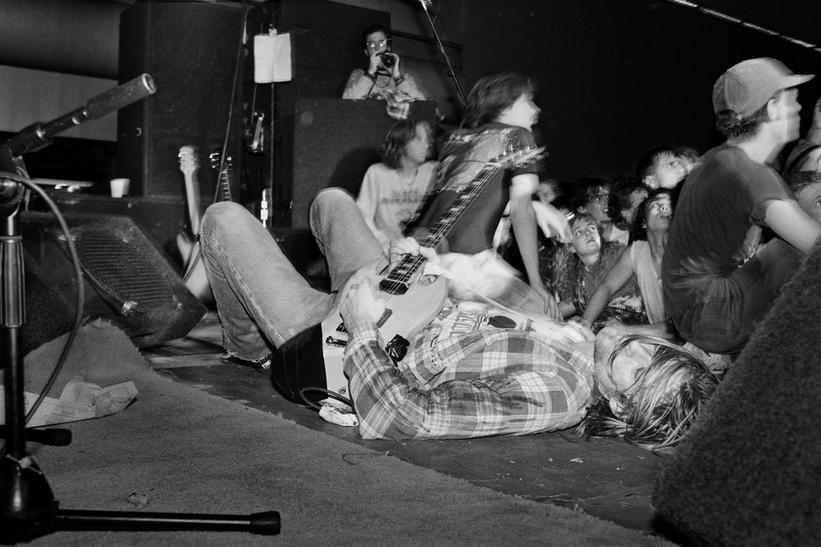
Kurt Cobain, University of Washington, Seattle, Jan. 6, 1990
Peterson Got Up Close & On Stage With Nirvana
Peterson had ready access to the band in their pre-Nevermind years. "It was great, in these early days, to be able to just crawl around on the stage, go do whatever I wanted to," he says. "It does bring an intimacy that you lose later on when you’re stuck in a position like the pit or off behind a PA or something."
In his early days of photographing Nirvana, Peterson had free range of movement and often stood behind the band or close at their side. The musicians had also become a lot more active on stage compared to when Peterson first saw them.
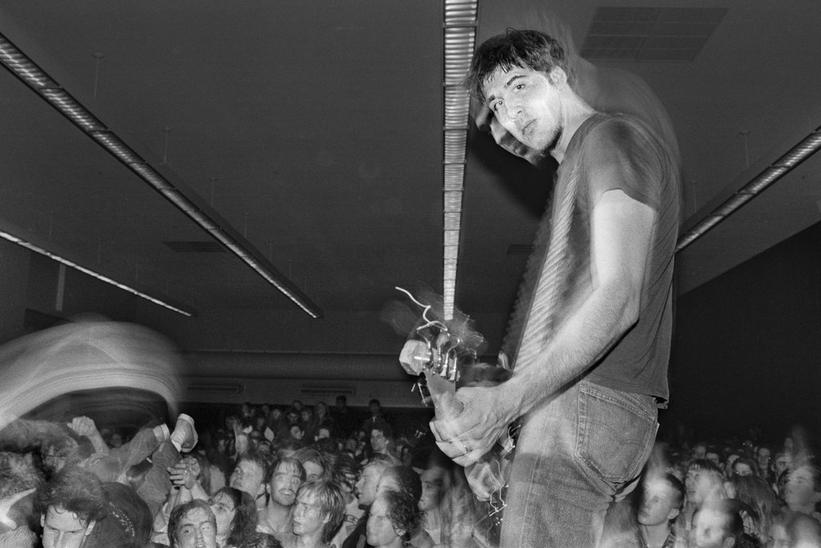
Krist Novoselic, University of Washington, Seattle, Jan. 6, 1990
"I don't know what it was, if it was having Chad [Channing] as their drummer or the addition of Jason Everman for a while [on guitar]; maybe that allowed Kurt to worry a little bit less about hitting the chords perfectly so that he could jump around and go face down on the stage and roll around and do all that," Peterson says. "Even so, he’s not holding the audience’s attention. They’re not looking at Kurt; they’re all looking at something over there, which must be somebody stage diving or something.
"It’s all those little details that you pick up on that are great; there’s a piece of crumpled paper in front, and another photographer up in the back," Peterson notes. "And again, in the Krist shot, he's looking at me yet everyone else is looking away. There’s all this other stuff going on that you don’t even have to pay attention to the band. There’s feet in the air here. A lot of Converse in the photos!"

Crowd shot, Motor Sports International Garage, Seattle, Sept. 22, 1990
Nirvana's Audience Was Just As Important — And Interesting
Peterson always focused his lens on the audience as much as the bands. "I love this one because you’ve got a Nirvana shirt there. One person is looking at me; nobody else is. Bare chests. A lot of sweaty, sweaty hair," he says of the above photo, taken at a makeshift venue that was actually a parking garage.
"Seattle crowds, we’re some of the best. And it just didn’t seem right to isolate the power of the bands from the effect that they were having on the audiences," Peterson reflects. "I found that the photos had just that much more power if you could anchor the band in their time and space with the audience, and see what that reaction is between the two, versus it just being the beauty shot of the singer."
Peterson says there was both a symbiotic and cathartic relationship between Nirvana and their fans. "People would be like, ‘Oh my God, look at those audiences in Seattle!’" The photos distill the essence of that relationship. "The bands are great, the personalities in the bands are great…that idea that it’s a complete scene, that the participation of the audience is just as important as the participation of the bands."
Peterson recalls standing next to the PA at stage right during this show.
"What I would do is, with one hand, lean out holding the camera upside down over the audience. And then I would have my flash in the other hand, so that the light gave a nice kind of mottling to it. Not looking through the viewfinder, just photographing. I do a lot of that," he says. "The camera takes the picture whether you’re looking through the viewfinder or not."

Kurt Cobain, Commodore Ballroom, Vancouver, BC, Canada, March 8, 1991
Peterson Sensed This "Smells Like Teen Spirit" Shot Was Something Special
Peterson knew immediately that something special had occurred when he took this picture. "I remember pushing the shutter on this shot and going, What just happened? But then the show moves on."
A few days later, Peterson was in his darkroom developing the film and finally saw the impact of the moment he captured. He printed the image and a proof sheet, and gave them to Nirvana’s Seattle publicist Susie Tennant, who shared them with Cobain. The picture is on the back of Nirvana's "Smells Like Teen Spirit" single.
The photo became one of Peterson’s most widely reproduced images. "I think what makes a photo iconic is that the photo reads easily and at the same time is larger than life and dramatic," he says. "And despite the fact that it reads easily to the eye, there’s a lot of other stuff, hidden stuff going on that you need to think about.
"It’s also a photo that you can sort of transport to any time and place. It doesn’t necessarily have to be locked in with this particular show or anything. It really goes beyond that and then that ends up standing the test of time."
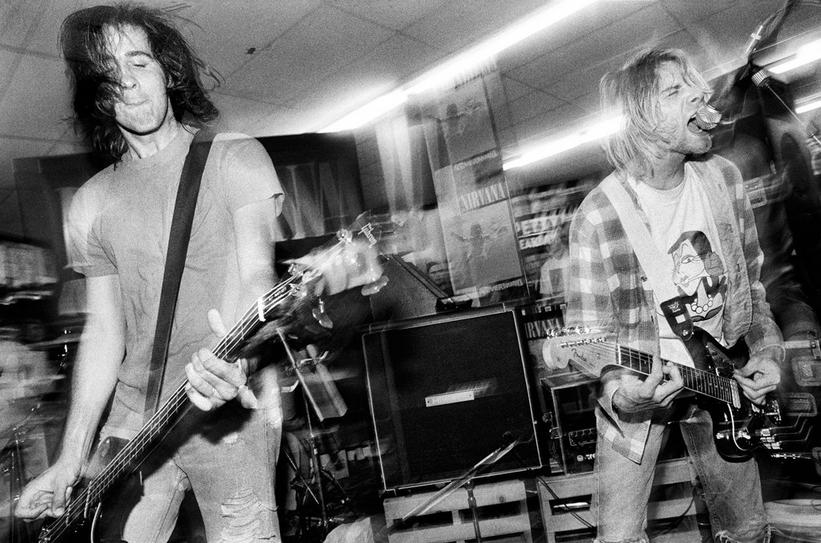
Krist Novoselic and Kurt Cobain, Beehive Music & Video, Seattle, September 16, 1991
By '91 Nirvana Inspired Mosh Pits Everywhere, Even In Stores
Peterson calls this in-store appearance, a week before Nevermind was released, as "a watershed moment."
"This was the last time I saw them play on a floor, which to me makes for great photos because you’re right there at the same level as them. It really is in your face," he says. "What was totally surprising was the subsequent mosh pit in the store, with people being hoisted on shoulders."
There were also signs of how things were about to change for the band, Peterson recalls. "Kurt was besieged by autograph seekers outside the store. It was the first time I think that really happened to him. He was definitely overwhelmed by it."
Peterson had some challenges in the darkroom when developing this film, which led to a "weird graininess" that differs from many of his other images. "At the time I was like, ‘Oh God!’ But I think it has a unique look that you just don't get with digital now, unless you really manipulate it."
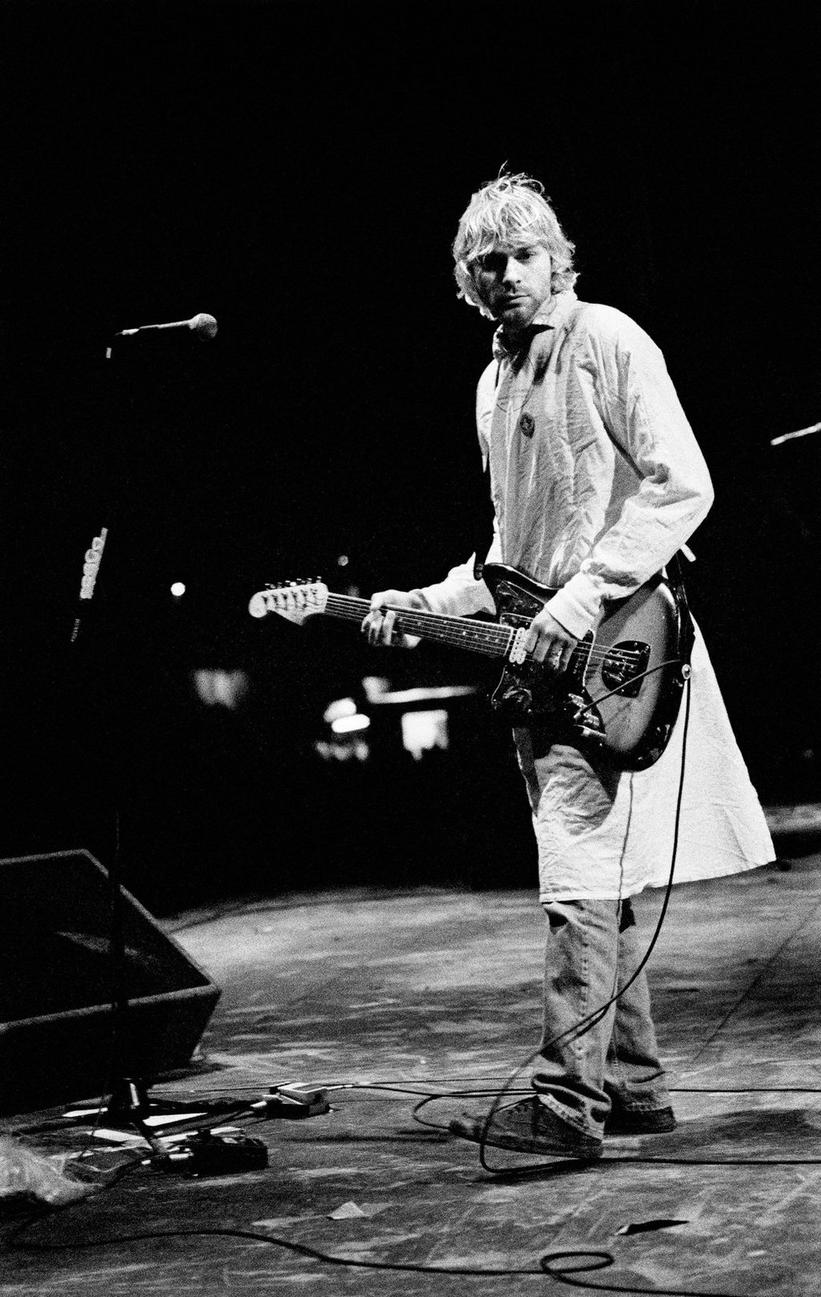
Kurt Cobain, Reading Festival, Reading, UK, August 30, 1992
Kurt Cobain Cared About His Peers
By the time of this show, Nirvana were a bonafide international sensation. The band were plagued by stories of drug use and rumors about an impending break-up, while Courtney Love had just given birth to her and Cobain's daughter. All of which attracted huge media interest in this performance.
"I was a little shocked when I went into the press tent; I had never been to a festival like this before and there were 96 photographers listed on the dry board!" Peterson reflects. "Photographers that were shooting from the pit in the front of the stage, they would bring them out and give them five minutes each."
That was not going to work for Peterson.
"And all of a sudden, Nick Cave finished and there was this huge rush to the stage. And [Nirvana’s UK publicist] Anton Brookes grabs me by the wrist and he’s like, ‘Dude, come with me!’ And we all start running up onto the stage, up the ramp. I was taking a few snaps and then everybody settled into their place. There was Eric Erlandson [from Hole] next to me, and to the right was Mark Arm [from Mudhoney] and some members of L7," Peterson says. "I didn’t have an official stage pass or anything like that, but as long as I was with those guys, it was all cool. That was my spot, so I didn’t dare move from it.
"This photo was a really, really special moment. Kurt, in between songs, he just looked over at us, and mouthed something like, ‘How are you guys doing?’ And we’re like, ‘We’re fine.’ And then we started waving like back at him, like, ‘Go play, dude! Don’t worry about us,’" Peterson remembers.
"It was like he wanted to check in with his peeps on the side of the stage. It’s one of my favorite photos."
A potential volume two of Nirvana photos is being considered, as is a retrospective of Peterson’s work, which includes photos of Soundgarden, Screaming Trees, TAD, Mother Love Bone, Beat Happening, and a multitude of others. But Nirvana invariably tops the list.
"You can talk and write reams about the dramas and the ins and outs. But it’s the power of the music that keeps people coming back," he says of the band. "And the fact that it’s not rooted in a time and place; you can make the music be whatever you want it to be. I mean, half the time you don’t know what Kurt’s singing about or even what the words are, but you can shout your own words along to it if you want. It’s the music that really is that lasting, lasting legacy."
11 Reasons Why 1993 Was Nirvana's Big Year

